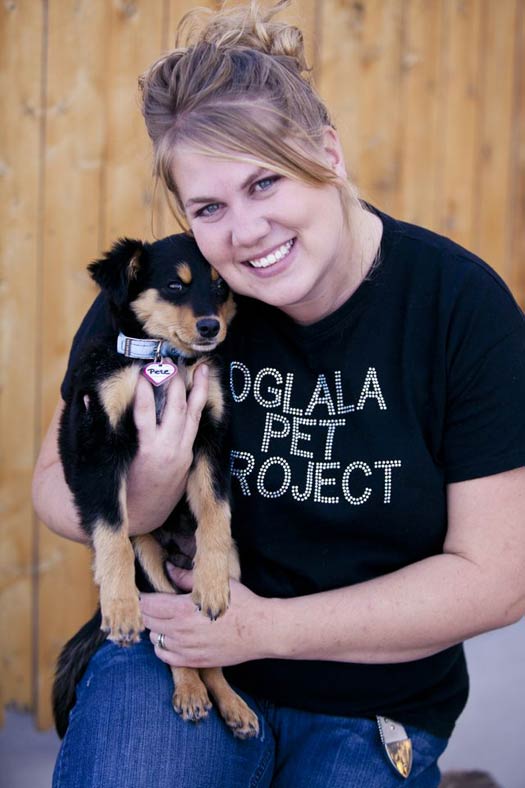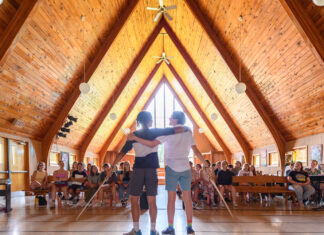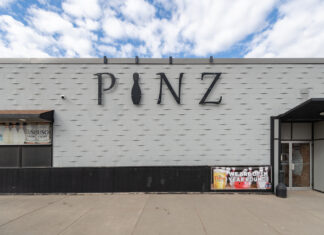Images by Jeff Sampson Photography and Asio Studio.
On June 20, an owner brought in a dog to a Rural Area Veterinary Service (RAVS) clinic in Kyle, S.D. and requested to put it down because the animal was “old and mangy.”
Andrea Goodman, president of the Oglala Pet Project, was present that day. She recalled, “He had mange so bad that he had huge sores on him.”
Not only did he have a severe case of mange, the dog, Mato (which means bear in Lakota), had both his back legs broken. Mato was able to use his left leg as it was broken near the ankle, but he had to elevate his right from the intense pain.
After the vet took a peek at Mato’s teeth, he noticed they were bright white, and came to the conclusion that the visibly starving dog was only around one year old.
“Our RAVS vet asked Andrea if OPP would take on Mato as he [so young]. Andrea said ‘yes,’ seeing him at his worst but knowing he deserved a chance,” said Darci Adams, a pet wellness clinic and transport volunteer and foster home and board member.
Mato is remarkably healthy and is ready to find a home, recently becoming up for adoption through OPP.
The Oglala Pet Project (OPP) is a 100 percent volunteer driven, community-based non-profit located on the Pine Ridge Indian Reservation in South Dakota. Named after the Oglala Sioux tribe, the reservation is unfortunately known for its poverty and struggle with addiction, and was recently featured on OWN’s: ”Our America: Life on the Rez.”
“[Shannon County] is one of the poorest counties in the nation, so there’s a lot of poverty, a lot of alcoholism, a lot of drug use and stuff like that,” said Goodman. “There are a lot of people on welfare. You go through the towns and some of them are nicer than others, but it’s just kind of a struggle.”
Goodman moved to Kyle six years ago with her husband, an Oglala Sioux tribe member (her two children are members as well). After moving into her husband’s family ranch and getting acquainted with the community, Goodman saw a need for something for the reservation’s pets, which had problems like overpopulation and constant illness/death due to lack of health precautions.
“There was such a need for some sort of a program to start. The closest vet is 60 miles away and a lot of people can’t afford gas,” said Goodman.
To read the rest of this article, pick up an issue of 605 today!


















